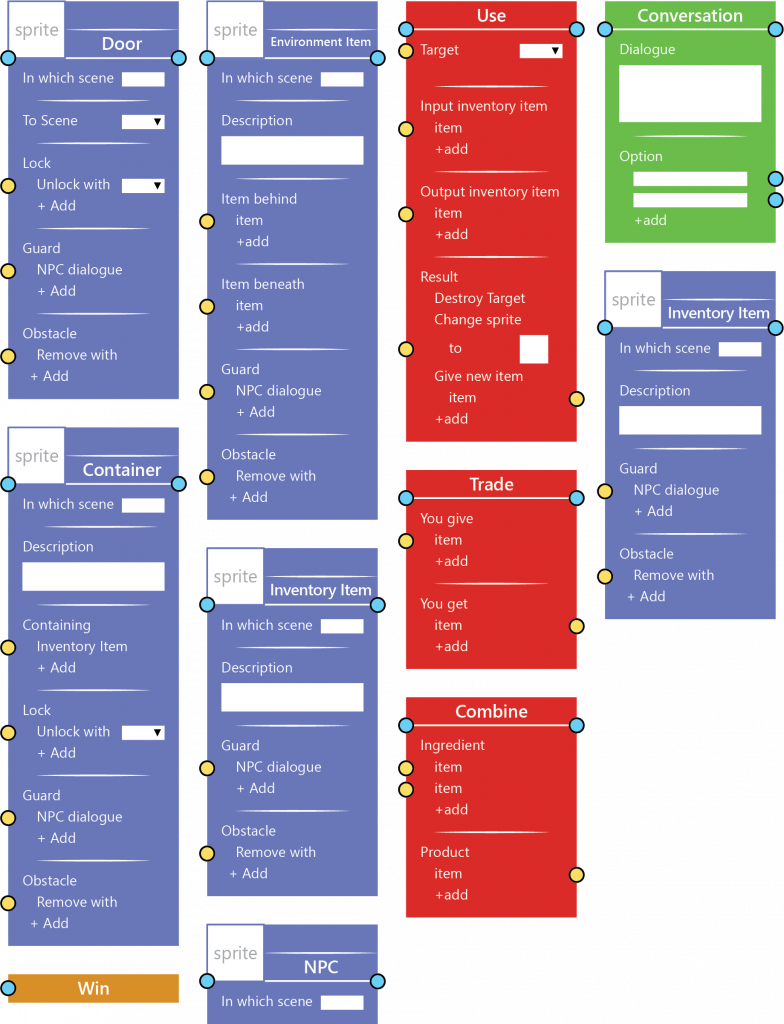Last week, we decided our basic puzzle strategy to be object-based puzzle nodes. To test whether the object-based puzzle nodes are powerful enough to represent different puzzles and whether those nodes are intuitive enough so that the user can pick up those nodes easily, we planned to hold a playtest this week on Friday. Thus, this week, we were mainly preparing the materials we need for the playtest.
UI Design
Even we were going to have paper prototypes for this playtest, we definitely still need the interface designed. In last year’s Alice’s Adventure project, The scene editor, the library, the hierarchy, the interaction list

To solve these drawbacks, we decided to have different tabs for different features: one for scene editing and one for puzzle building. Since the hierarchy can be used for multiple purposes, it is shared by these two tabs. The initial interface is like this:

Clarifying Puzzle Nodes
We proposed the object-based puzzle nodes last week and this week we started to clarifying it. We started to finalized the initial list of all the object nodes and started to design the different options on each object (e.g.: the locks on the door and the guard of the container). Also, our client mentioned that we could also provide some templates for the users to quickly add some example puzzles. We were not that convinced at first but we still compiled a list of puzzle template which we planned to do AB test during the playtest to see which kind of nodes (object-based puzzle nodes or puzzle templates) the users love more.

Playtesting!
On Feb. 15, we held our first playtest inside of ETC! The goal is to test whether current object-based nodes have enough expression power and are intuitive enough. Also, we would like to know which plan is more preferred, the basic nodes or the premade templates.
11 ETC students and one faculty took part in this playtest and we got some interesting findings:
- Playtesters tend to use templates more while they prefer to keep both basic nodes and premade templates
- The puzzle nodes and scene decoration do need much space so multiple tabs are needed while the playtesters tend to switch a lot between tabs or some of them just ignore another tab
- The playtesters can use the nodes to compose puzzles while the wording and the user flow (like adding the sprite or attaching different nodes) should be improved.
These findings were super useful and there were still quite a lot design challenges to need to overcome!